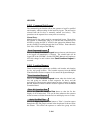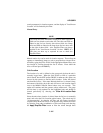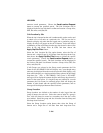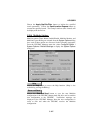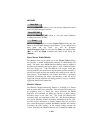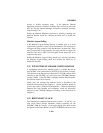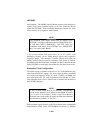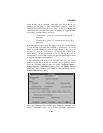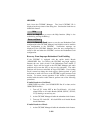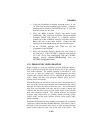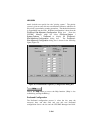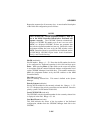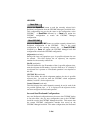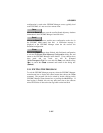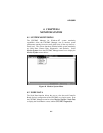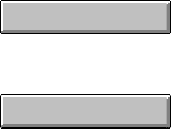
LBI-39224
3-202
basis from the CEC/IMC Manager. The Local CEC/IMC ID is
displayed at the top center of the dialog box. Unselect the check box to
disable this feature.
Help
Choose the
Help
button to access the Help function. (Help is also
available by pressing the F1 key.)
Save and Send
Choose the
Save and Send
button to save the new Redundant Clock
configuration to the CEC/IMC Manger's hard disk drive and to send the
new configuration to the CEC/IMC. Verification messages are
displayed at the CEC/IMC Manager when the new configuration is
saved to disk and when the CEC/IMC receives the Redundant Clock
configuration.
Recovery From Improper Redundant Clock Enabling
If the CEC/IMC is equipped with the earlier Audio Boards
(19D903302P1 Rev. J or before), the CEC/IMC may begin toggling
between the two clock circuits if the Redundant Clock feature is
enabled. Errors will be logged at the CEC/IMC Manager and audio
problems will occur that may or may not be noticeable. The audio
problems will be more noticeable in larger CEC/IMCs. If no backup
clock is turned on during the clock toggles, distinct periods of good
audio then no audio will occur as the CEC/IMC toggles between clock
circuits. To restore correct operation if this feature is accidentally
enabled with the earlier Audio Boards, perform one of the following
procedures:
If Audio Boards Are Not Mixed:
(19D903302P1 up to Rev. J, no 19D903302P1 Rev. K or later, and no
19D903302P3 boards)
1. Turn all "B" clocks OFF at the Clock Boards. All clock-
related LEDs on all Audio Boards (BCLK, SSYNC, FSYNC,
2175) should go out and stay out.
2. At the CEC/IMC Manager disable the redundant clock feature.
3. Turn one "B" clock ON. All clock LEDs on all Audio Boards
should illuminate.
If Audio Boards Are Mixed:
1. At the CEC/IMC Manager disable the redundant clock feature.



